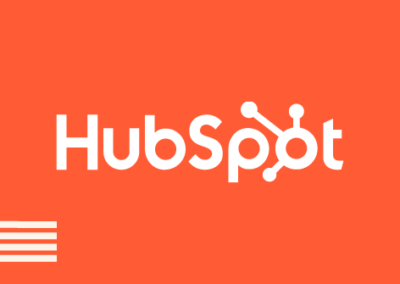In this blog post, we’ll explore how HubSpot Sales Hub’s analytics features can transform your B2B sales strategy, driving growth and profitability. From understanding the benefits of sales analytics to setting up your dashboard and utilizing real-world examples, we’ll provide a comprehensive guide to unlocking the full potential of HubSpot Sales Hub for your B2B company.
Why Sales Analytics Can Help You Gain More Sales
In today’s highly competitive business environment, sales analytics have become increasingly important. By leveraging HubSpot Sales Hub‘s analytics capabilities, B2B companies can unearth valuable insights, identify trends, and make data-driven decisions. As a result, this leads to a more effective sales strategy and increased revenue.
What are the Benefits of Sales Analytics in Correlation to Sales
There are several benefits to using sales analytics within HubSpot. First and foremost, these tools allow you to track and measure your sales team’s performance, leading to improved efficiency and targeted training.
Moreover, analytics help you identify patterns in customer behaviour, enabling your team to better anticipate customer needs and tailor their approach accordingly.
Additionally, you can pinpoint the most effective marketing channels and make informed decisions about resource allocation. In essence, sales analytics can empower your company to make smarter decisions, optimize sales processes, and drive growth.
A Step-by-Step Guide to set it up
- Access your HubSpot account and head over to Reports > Analytics Tools.
- Click on Sales Analytics.
- Find the topic you’d like to examine in the left sidebar menu and choose from the available reports.
- Pick the report you’d like to explore further. You can learn more about each report in the sections below.
As you preview the selected report in the centre panel, you’ll notice different tabs that present the data in various ways. For instance:
- To understand the report you’ve chosen and its tabs, click the About this report tab in the right panel.
- Use the dropdown menus on the Filters tab in the right panel to refine your data. The available filters vary depending on the report, and may include:
- Date range by: narrows down records within a specific date range, based on their property values. The date property applied is specified.
- Group by: segments records according to their owners or their owners’ teams.
- Select reps: filters records based on their owners.
- Select teams: filters records based on their owners’ teams.
- Pipeline: filters records based on their deal pipeline.
- To apply additional filters, click Add filter and choose your filter criteria.
- To share the report with other users, click the Actions dropdown menu in the centre panel and select Copy report URL.
- After customizing the report, click Save report to store it in your reports list or add it to a dashboard.
An Example Where It’s Relevant for a Company
Consider a B2B software company struggling to understand which marketing channels generate the most leads. By utilizing HubSpot Sales Hub’s sales analytics, the company can analyze lead sources, conversion rates, and revenue attributed to each channel. This data-driven approach allows the company to allocate marketing resources more efficiently, focusing on the most profitable channels, and ultimately increasing sales.
How Radiant Can Help you Utilize Features Within HubSpot
Radiant, as a HubSpot partner, can assist you in leveraging the sales analytics features within HubSpot Sales Hub together with the rest of HusPot. Our team will help you set up and customize your analytics dashboard, ensuring it aligns with your business goals. Furthermore, Radiant will provide ongoing support and guidance, so you can make the most of HubSpot’s tools and drive sales growth for your B2B company.



